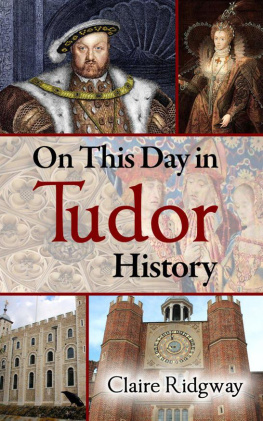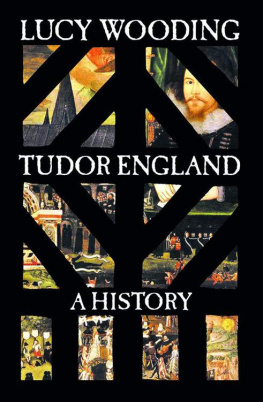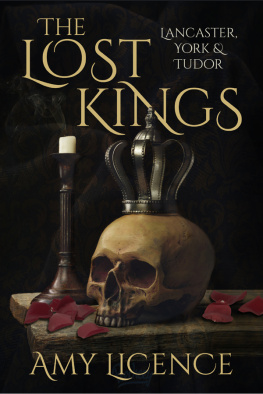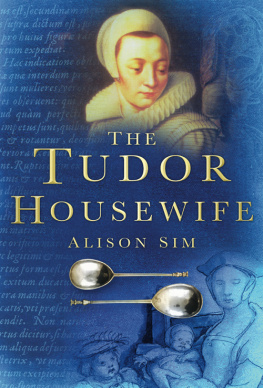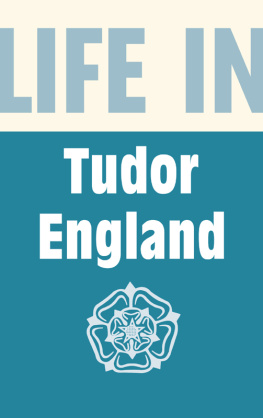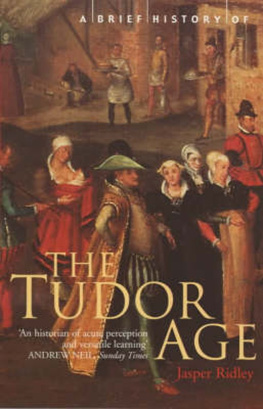Ridgway - On This Day in Tudor History
Here you can read online Ridgway - On This Day in Tudor History full text of the book (entire story) in english for free. Download pdf and epub, get meaning, cover and reviews about this ebook. year: 2012, publisher: MadeGlobal Publishing, genre: Non-fiction. Description of the work, (preface) as well as reviews are available. Best literature library LitArk.com created for fans of good reading and offers a wide selection of genres:
Romance novel
Science fiction
Adventure
Detective
Science
History
Home and family
Prose
Art
Politics
Computer
Non-fiction
Religion
Business
Children
Humor
Choose a favorite category and find really read worthwhile books. Enjoy immersion in the world of imagination, feel the emotions of the characters or learn something new for yourself, make an fascinating discovery.
- Book:On This Day in Tudor History
- Author:
- Publisher:MadeGlobal Publishing
- Genre:
- Year:2012
- Rating:3 / 5
- Favourites:Add to favourites
- Your mark:
- 60
- 1
- 2
- 3
- 4
- 5
On This Day in Tudor History: summary, description and annotation
We offer to read an annotation, description, summary or preface (depends on what the author of the book "On This Day in Tudor History" wrote himself). If you haven't found the necessary information about the book — write in the comments, we will try to find it.
On This Day in Tudor History — read online for free the complete book (whole text) full work
Below is the text of the book, divided by pages. System saving the place of the last page read, allows you to conveniently read the book "On This Day in Tudor History" online for free, without having to search again every time where you left off. Put a bookmark, and you can go to the page where you finished reading at any time.
Font size:
Interval:
Bookmark:
On This Day
in Tudor
History
ON THIS DAY
IN
TUDOR HISTORY
Copyright 2012 Claire Ridgway
All rights reserved. No part of this publication may be reproduced, stored in a retrieval system, or transmitted, in any form or by any means, electronic, mechanical, photocopying, recording or otherwise, except as permitted by the UK Copyright, Designs and Patents Act 1988, without the prior permission of the publisher.
For more information on MadeGlobal Publishing, visit our website:
www.madeglobal.com
To Tim, Christian, Verity & Joel,
Always and forever
xxxx
To Su,
A great friend
x
In memory of Professor Eric Ives (1931-2012) for inspiring me and keeping my passion for the Tudors burning.
Acknowledgements
This book is the result of over three years of hard work and the support and encouragement of many people. Apologies if I miss anyone out.
Nasim Tadghighi and Paul Wiltshire for reminding me of "on this day in history" events I'd missed in my research via their tweets.
The Anne Boleyn Files visitors and Anne Boleyn Fellowship members for their ongoing encouragement.
Authors and historians Leanda de Lisle, Suzannah Lipscomb, John Guy and Julia Fox for all their encouragement over the past few years.
George Skipwith and his team at Rosslare Arts International for their editing skills.
My family for putting up with me researching and writing at all hours of the day and night sorry!
Clare Cherry for being there to bounce ideas off and for keeping me grounded.
Sarah Bryson of the blog Anne Boleyn from Queen to History, Emma Fuery and Darren Wilkins of the Tudor Roses, and author J Thorn for all your support. Thank you!
Introduction
The Tudor period ran from the accession of Henry VII, after the Battle of Bosworth on 22nd August 1485, to the death of Elizabeth I, the last Tudor monarch, and Henry VII's granddaughter, on 24th March 1603. In those 118 years, six monarchs ruled England albeit one who was quickly removed and two were iconic monarchs whose images are still recognised throughout the world today: the tyrannical Henry VIII and Elizabeth I, the Virgin Queen.
The Tudor period is a fascinating period for history lovers. The Reformation was sweeping through Europe, there were challenges to the throne, bloody executions, brutal persecutions, the plague, disease, poverty and superstition. And, of course, it was the time in which England broke with Rome, the Church of England was formed and two queens were executed on the orders of their husband, the King. England would never be the same. It wasn't all bad, though. There were also the Renaissance and Elizabeth I's Golden Age, with the births of poets and playwrights like William Shakespeare, Christopher Marlowe and Philip Sidney.
This book will take you through the year, giving details of key events that happened on those days in Tudor history - births, deaths, marriages, baptisms, executions, annulments, battles, treaties and more as well as information on feast days and Tudor traditions. You will notice that there are many more deaths than births in this book, and that is because many people's births were not recorded; parish records, unfortunately, do not go that far back.
My thanks go to visitors to The Anne Boleyn Files website and Facebook page for encouraging me to continue my research and to expand my little daily "on this day in history" posts into a full length book. I hope you enjoy it as much as I have enjoyed researching it.
Using this Book
On this Day in Tudor History is laid out as a modern diary or calendar, from 1st January to 31st December, even though the Tudor New Year began on 25th March, "Lady Day". This makes it easy to find the date you're looking for. You will also find sections on Lent, Easter and Christmas.
As well as reading this book from cover to cover, to learn more about the Tudor period, you can also use On this Day in Tudor History for:
- Educational purposes It's an excellent resource for teachers and children studying a Tudor topic.
- Competitions and quizzes The perfect resource for pub quizzes and trivia nights.
- Birthdays If your friend is a Tudor history lover, then why not add a Tudor fact to their birthday card?
- Annoying (sorry, I mean educating) friends, family and work colleagues on a daily basis with your Tudor trivia. Wow them with your knowledge!
- Dipping into over your morning coffee you can expand your mind.
There are many quotations from primary sources, such as chronicles and letters from the Tudor period, and the old English may baffle you at first and look like nonsense because there was no standardized spelling. Simply read aloud and remember that "u"s and "v"s tend to be interchangeable, all will become clear!
Note: The House of Stuart is spelled as both "Stuart" and "Stewart", and both are correct. Apparently the "Stuart" spelling came from the French version of the name because there was no letter "w" in the French language.
The Tudor Dynasty
Henry VII (1457-1509)
Ruled from 22nd August 1485 to his deathon 21st April 1509.
Henry VIII (1491-1547)
Son of Henry VII. Ruled from 21st April 1509 tohis death on 28th January 1547.
Edward VI (1537-1553)
Son of Henry VIII. Ruled from 28th January 1547to 6th July 1553.
Lady Jane Grey (1537-1554)
Granddaughter of Mary Tudor, Queen of France, great-granddaughter of Henry VII. Ruled from 6th July 1553 to 19th July 1553, when Mary I was proclaimed Queen. She was executed on 12th February 1554for treason.
Mary I (1516-1558)
Eldest daughter of Henry VIII, and his first wife, Catherine of Aragon. Ruled from 19th July 1553to her death on 17th November 1558.
Elizabeth I (1533-1603)
Daughter of Henry VIII and his second wife, Anne Boleyn. Ruled from 17th November 1558 to her death on 24th March 1603. She died childless, and James VI of Scotland ascended to the throne, becoming James I and starting the Stuart period.House of Stuart
The Scottish Monarchy
during the Tudor Period
James III of Scotland (1451-1488)
Ruled from 3rd August 1460 to his death on11th June 1488. He was the son of James II.
James IV of Scotland (1473-1513)
Ruled from 11th June 1488 to his death on9th September 1513 at the Battle of Flodden . He was the son of James III.
James V of Scotland (1512-1542)
Ruled from 9th September 1513 to his death on14th December 1542. He was the son of James IV.
Mary, Queen of Scots, or Mary I of Scotland (1542-1587)
Ruled from 14th December 1542 to 24th July 1567, when she was forced to abdicate. She was the daughter of James V.James VI of Scotland/James I of England (1566-1625)
Ruled Scotland alone from 1567 to 1603 and then ruled England, Scotland and Ireland as James I from 24th March 1603 until his death on 27th March 1625. He was the son of Mary, Queen of Scots.The Tudor Calendar
Feast Days and Special Days
Note: The calendar starts on 25th March, because that's when the Tudor New Year began.
March
25th "Lady Day", or the Feast of the Annunciation of the Blessed Virgin - This feast day commemorated the day that Mary was first told she was carrying Jesus. It was the first day of the Tudor Calendar.
April
23rd St George's Day The feast day of the patron saint of England and also the day for announcing new appointments to the Order of the Garter, the highest order of chivalry in England. Some towns held special St George's Day processions, complete with replica dragons and statues of St George, and pageants depicting George killing the dragon.
25th St Mark's Day
May
1st May Day The main spring celebration. Traditions included going to local woods to "make the may", i.e. collect greenery and make garlands, the singing of bawdy songs, and decorating and dancing around the maypole. The royals celebrated with jousting and pageants.
Next pageFont size:
Interval:
Bookmark:
Similar books «On This Day in Tudor History»
Look at similar books to On This Day in Tudor History. We have selected literature similar in name and meaning in the hope of providing readers with more options to find new, interesting, not yet read works.
Discussion, reviews of the book On This Day in Tudor History and just readers' own opinions. Leave your comments, write what you think about the work, its meaning or the main characters. Specify what exactly you liked and what you didn't like, and why you think so.

